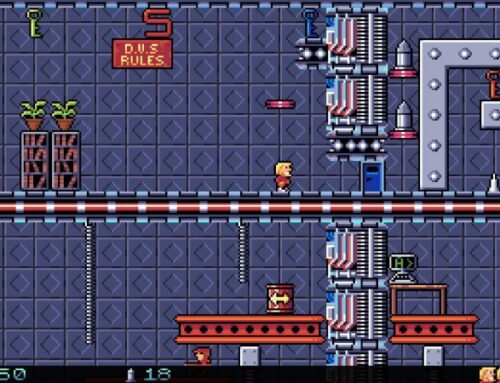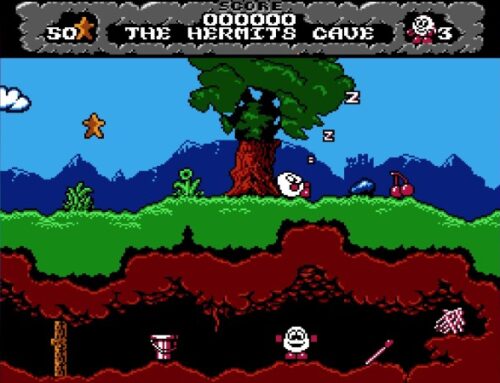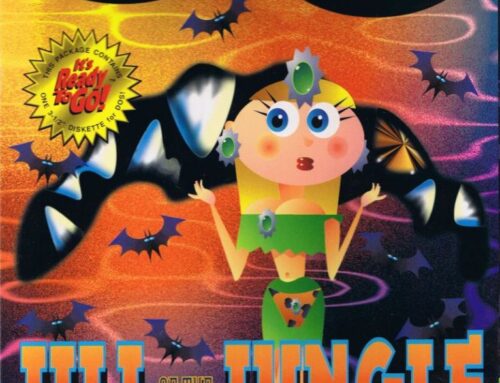I love Starflight. I have done ever since I was a kid — and having returned to it recently, I think I love it even more than I ever did before. And the reason for this is despite its relatively primitive technology, I am yet to play another game that quite captures the feeling of captaining a starship — not a starfighter — and exploring the great unknown in the same way.
Oh sure, there have been other great space games in both the retro and modern scenes. Star Control II is rightly held up as a classic in the retro sphere, for example, and despite a dodgy start No Man’s Sky is still wowing people with its scale and ambition in the modern scene. But neither of them quite capture the same feeling I get when I’m playing Starflight. Which makes my sessions with Starflight feel all the more valuable.

In Starflight, you take on the role of a starship captain affiliated with the loosely organised Interstel corporation. I say “loosely organised” because despite Interstel technically being your “employer”, all they do is provide you with a basic ship and some very vague instructions; beyond that, your exact purpose in Starflight is largely left up to you. Ostensibly you’re supposed to be exploring the galaxy and bringing back valuable minerals — particularly the energy-producing Endurium element — but it’s really up to you what you decide to do.
At the opening of Starflight, you have a ship, but no crew, and a few monetary units (or MUs) to play with. Using that initial funding, you need to hire and train some crew members for your ship (apparently “you” are not a crew member in your own right), assign them to appropriate stations, outfit your ship with any remaining cash and then take to the stars. You can explore the solar system in which Interstel’s Starport resides initially, or you can head off into deep space and take aim for other systems to explore if you see fit.
The game isn’t completely directionless, mind; as you repeatedly return to Starport to sell your minerals and upgrade your ship, you’ll gradually receive messages that hint at other things going on — most notably the fact that a number of systems seem to have unexpectedly gone supernova in relatively recent years, and your own system is starting to show worrying signs that this may well happen there before long, too. As such, as well as your exploration and trading, you now have the pressure to find suitable colony worlds that people can be evacuated to — and perhaps track down the source of the mysterious phenomenon, too.

Crucially, though, you can completely ignore this side of things if you want to, and play the game as a purely open-ended space sim. Yes, after a certain point your home system will indeed go supernova — and after that you’re pretty screwed — but if you’d rather leave all that pesky investigating up to others and just pootle around the galaxy at your own pace, you can do just that.
Regardless of your reasons for doing so, you have a number of different things you can do in space once you’ve launched from Starport. Orbiting a planet, for example, allows your Science Officer to scan and analyse it in the hope of determining whether or not it’s likely to play host to valuable minerals or lifeform data. You can then choose if you want to actually land your ship on the planet and send out your Terrain Vehicle (or TV) to go and gather materials, investigate ruins and/or tangle with the local wildlife.
Starflight is full of weird and interesting things that make it clear it’s a game not intended to be rushed. For example, upon choosing to land on a planet, you’re presented with the initially baffling option as to whether or not you want to “open the viewport”. Select “yes”, and the landing sequence is depicted through an excruciatingly (albeit realistically) slow three-dimensional sequence that shows, from first-person, your ship approaching the planet and finally descending to its surface.

The whole thing takes several minutes (and you can do it when you launch, too) and it’s honestly a mercy that you can skip it — but there’s something about it that just feels right. This is more Star Trek than Star Wars, so of course it takes a long time for your big, hulking, unwieldly spaceship to set down on a planet. And when you’re down, you never quite know what you’re going to find.
While it would be easy for Starflight to feel daunting with all the possibilities you have ahead of you, the basic gameflow is fairly simple to begin with. Find a planet, scan it, figure out an appropriate landing spot (high elevations typically have more minerals; lower equatorial areas tend to support life on planets where there is life in the first place), take out the TV, gather as much junk and/or aliens as will fit in your ship’s cargo pods, return to Starport, sell all your crap and/or aliens, repeat.
Where things get interesting is in the unexpected happenings along the way. Travelling through space, you may find yourself wandering into the territory of other alien races — and if your Communications Officer’s skills aren’t up to snuff, you’ll have to decipher their garbled messages and determine the best way to respond to them. While planetside, inclement weather conditions can make it hard to find your way back to your ship — or even injure and kill your crew in particularly challenging circumstances. And, of course, with that plot running along in the background, every so often you’ll stumble across alien artifacts and hidden messages — will you be able to solve the mystery?

Starflight is fun because it fulfils its stated goal of “putting a galaxy on a disk” — and it sets itself up as a toy to be played with as much as a structured game. Its sedate pace — even during the occasional times when encounters with alien races turn hostile — means that it’s an extremely relaxing game to spend time with, but an enormously rewarding one if you engage with it over the long term.
Sure, with its relatively primitive tech, visuals and sound, your imagination is doing a lot of the work — but it’s testament to what is in the game that your imagination can derive such enjoyment from what Starflight has to offer. And that’s why I keep coming back to it years after I first played it — even knowing that more modern space games might be more obviously “impressive” to look at. There’s just something magical about Starflight, and that’s never going to change.
Screenshots of Atari ST version from MobyGames.




